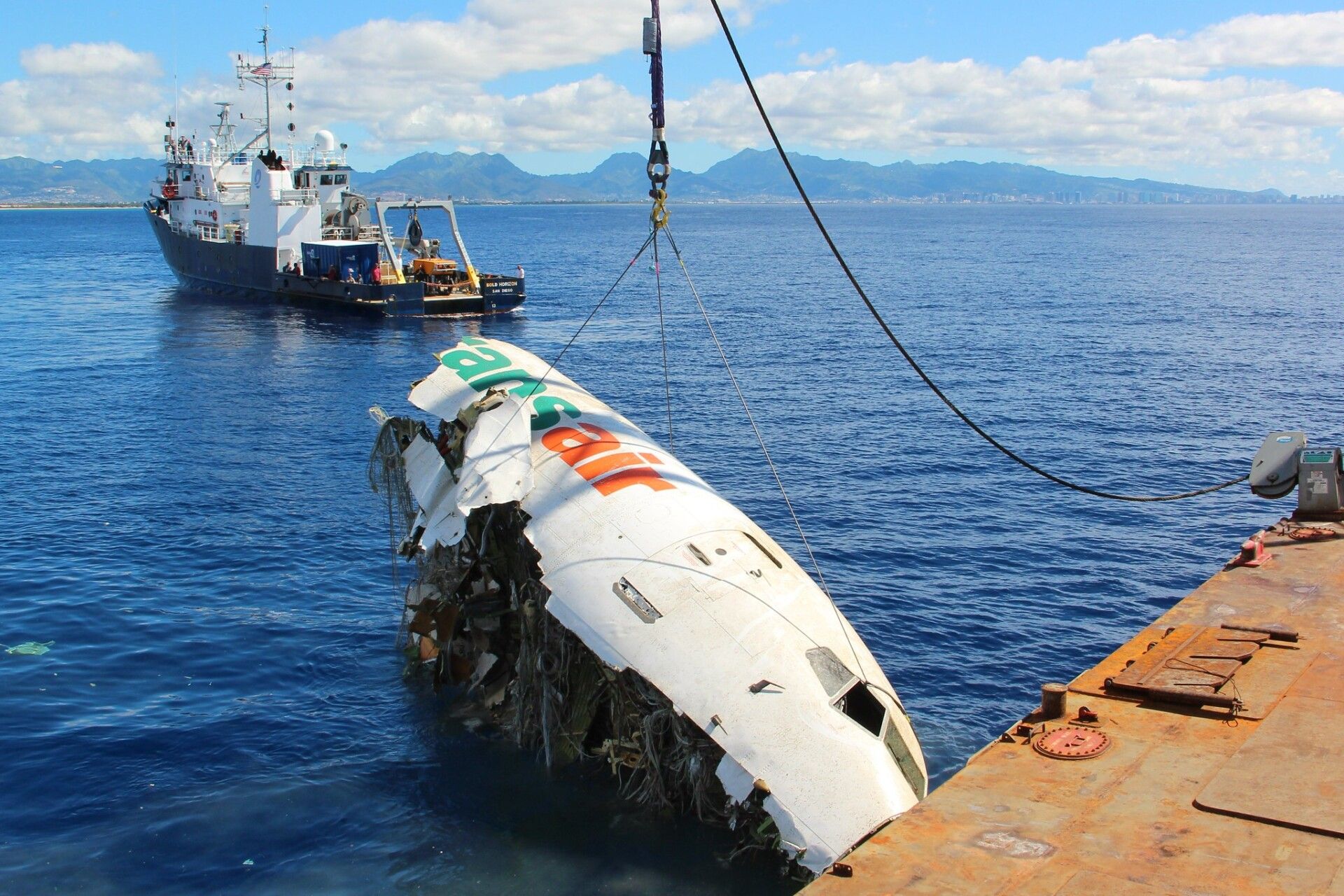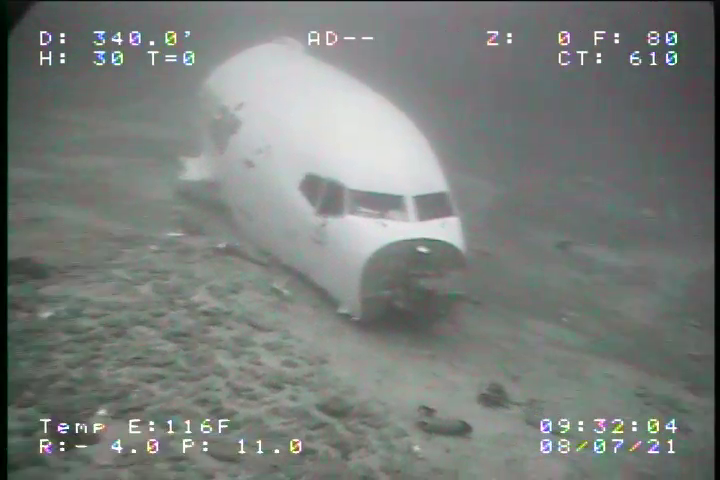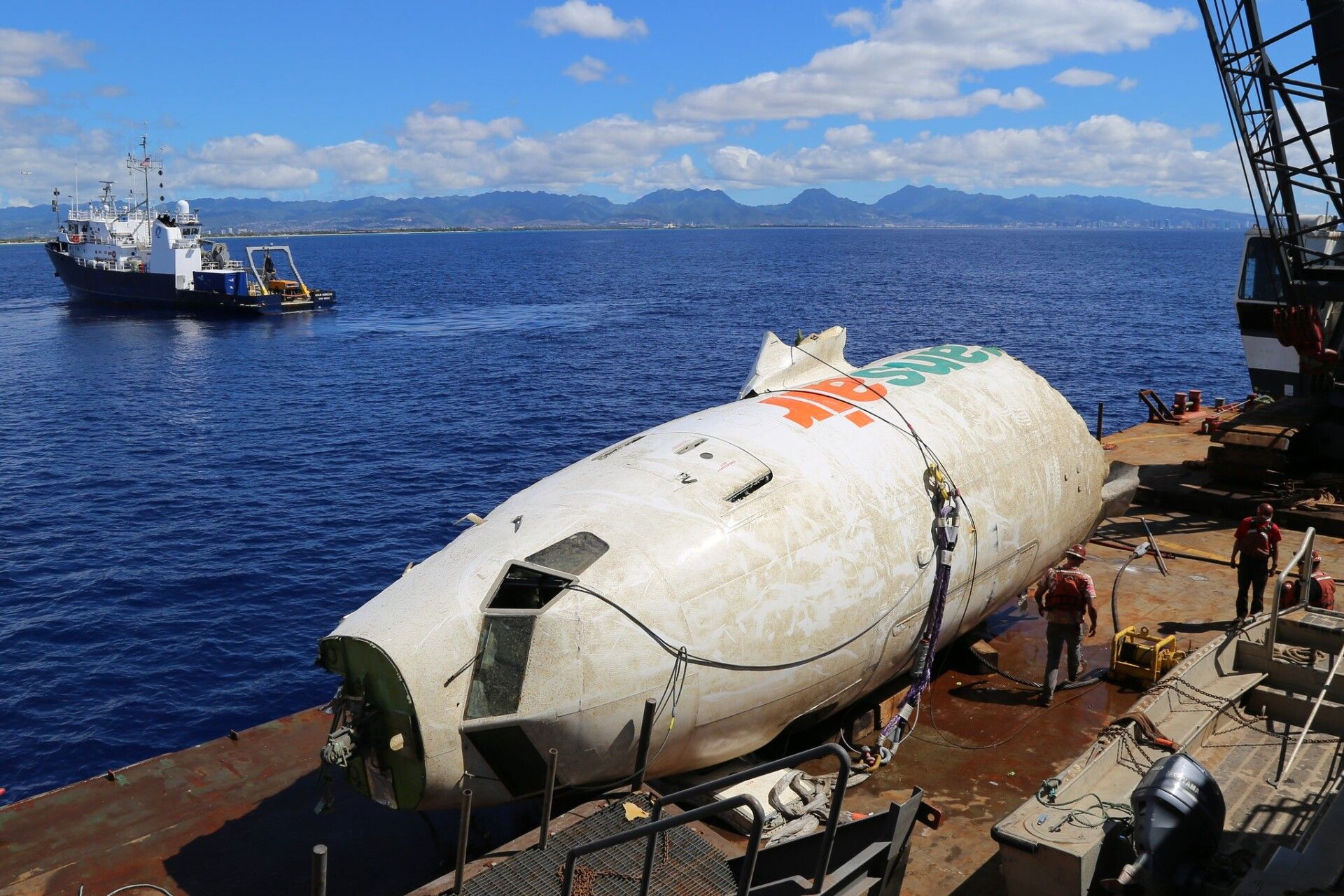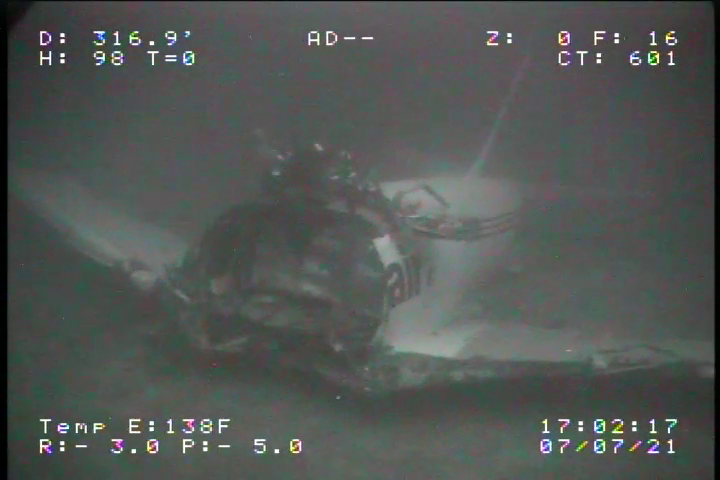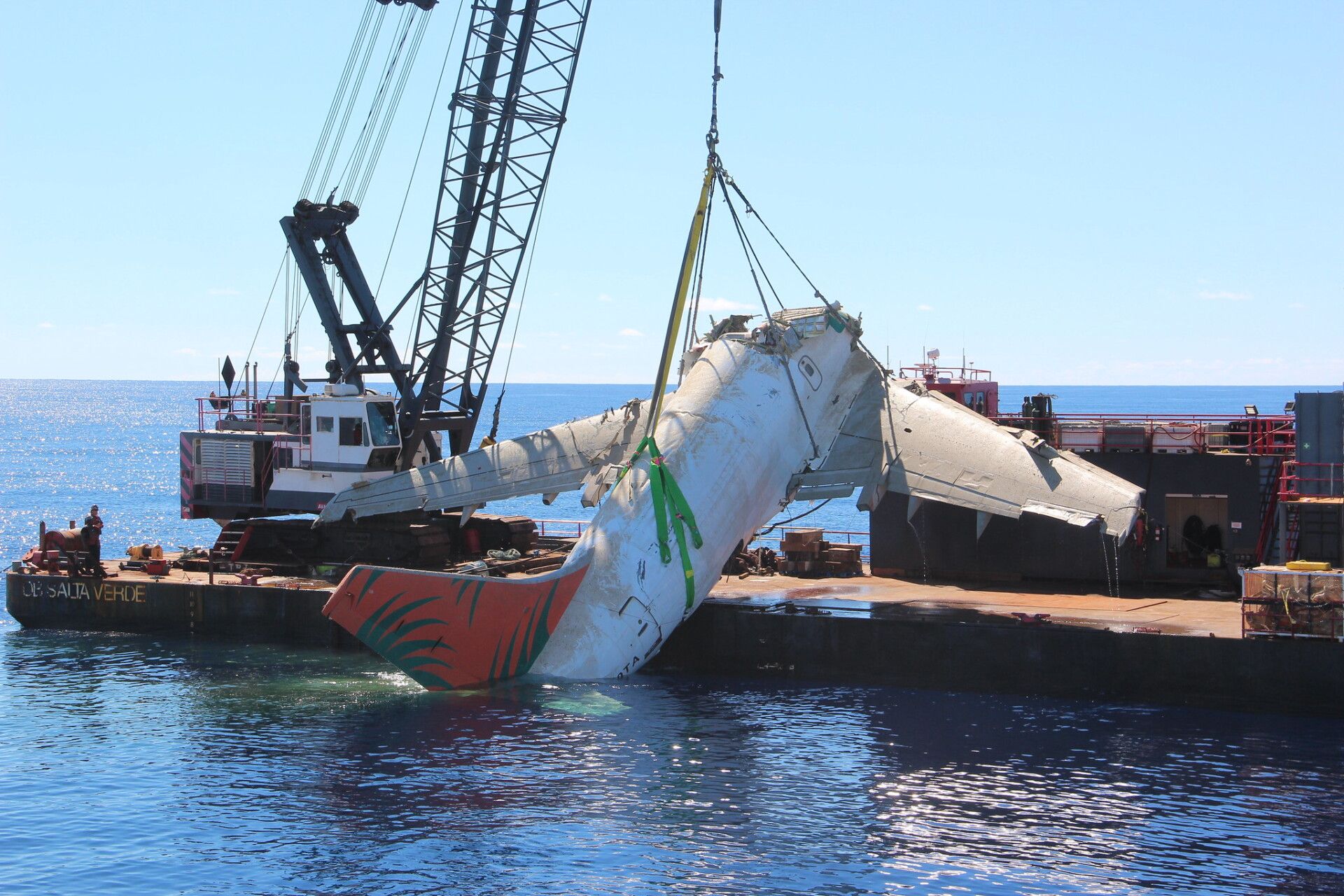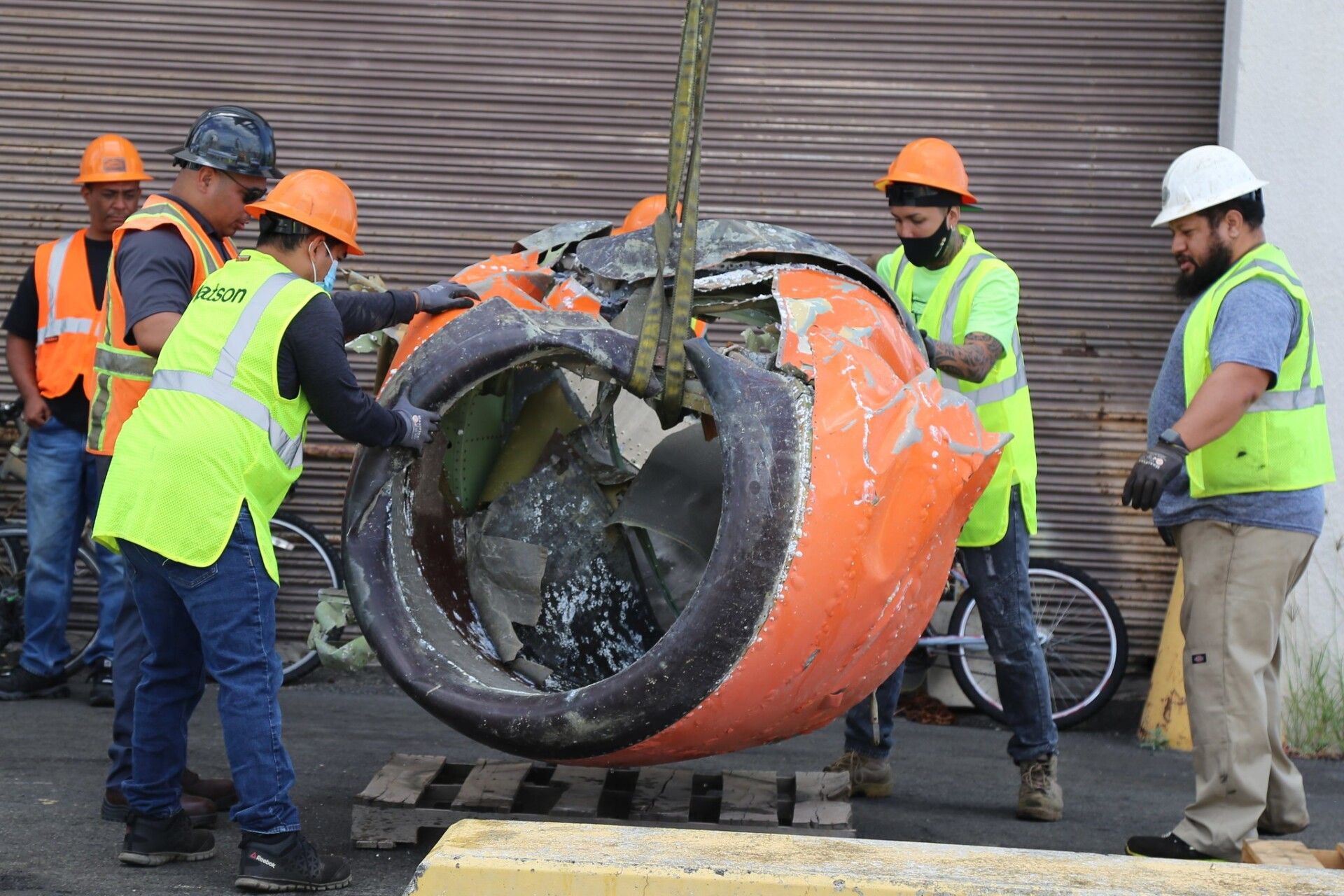The National Transportation Safety Board has recovered a TransAir Boeing 737-200 from the ocean floor just off of Hawaii. The aircraft that crashed exactly four months ago was resting on an ocean shelf between 350-450 feet (106-137 meters) from the ocean surface. The mission to recover the plane took place throughout October.
Having an aircraft is a huge boon when undertaking air crash investigations. From the aircraft's black boxes to individual components, having plane parts can help investigators piece together precisely what happened to a downed jet. However, recovering an aircraft that has split into two seems to be easier said than done when it's at the bottom of the Pacific Ocean.
A complex operation
Per the NTSB, it seems as though recovering the Boeing 737-200 from the ocean floor was no mean feat. It involved various companies, from the aircraft's insurance provider, who paid for the mission, to specialists in ocean floor recovery and even endangered species experts.
To start with, a research vessel (the Bold Horizon) and a barge (The Salta Verde) both traveled from California to Honolulu. On October 12th, the Bold Horizon left the port in Honolulu and headed to the wreck site, not far from the island. The ship's remotely operated vehicle prepared the engines and front landing gear assemblies with straps, which were then used to hoist them out of the water. The parts were then taken to shore by the Bold Horizon on October 17th.
The next day, the ship returned to recover the forward fuselage section. This part was around 37 feet (11.28 meters) long and weighed around 15,500lbs (7,030 kilograms). This reached this shore on October 22nd, having been fished out on October 20th.
Hear from aviation’s movers and shakers. Book your free ticket for the Future Flying Forum now.
The trickiest part of the recovery
Finally, the rear part of the fuselage was recovered. This proved to be the most challenging part for several reasons. Not only was it an awkward shape, but it was also heavy. The aft part of the aircraft itself weighed around 48,500lbs (21,999 kilograms). However, four cargo containers remained secured in the plane, adding an extra 12,000lbs (5,443 kilograms) to be recovered.
The tail and wings remained attached to the aft section of the fuselage. The operation had to be completed slowly and carefully to make sure that it didn't come apart while rising to the surface. The part was recovered from the ocean on October 30th and brought ashore a day later.
Of course, the investigators were mainly interested in recovering the fuselage and black boxes. Still, as the insurance company ended up footing the bill, some of the cargo lost in the accident was also recovered.
Commenting on the mission, NTSB Chair Jennifer Homendy remarked,
“The recovery of the recorders and virtually the entire airplane represents a major step forward in the investigation. We are so appreciative of the collaborative efforts of the federal and state agencies, parties and contractors that contributed to this successful outcome.”
What's next?
The NTSB will now continue their investigation into the accident with a particular emphasis on the parts recovered. The fuselage will be investigated in Hawaii, where it will remain. Meanwhile, the engines will be loaded onto the barge to return to the US mainland. This makes sense as the barge is going here next anyway.
Once on the mainland, investigators will tear the engines down to establish if they played a role in the incident. The black boxes will also be transported to the mainland. Once in Washington, they will be restored and then analyzed. The NTSB anticipates that the investigation will be completed in the next year or two.
What do you make of the recovery effort? Let us know what you think and why in the comments!

